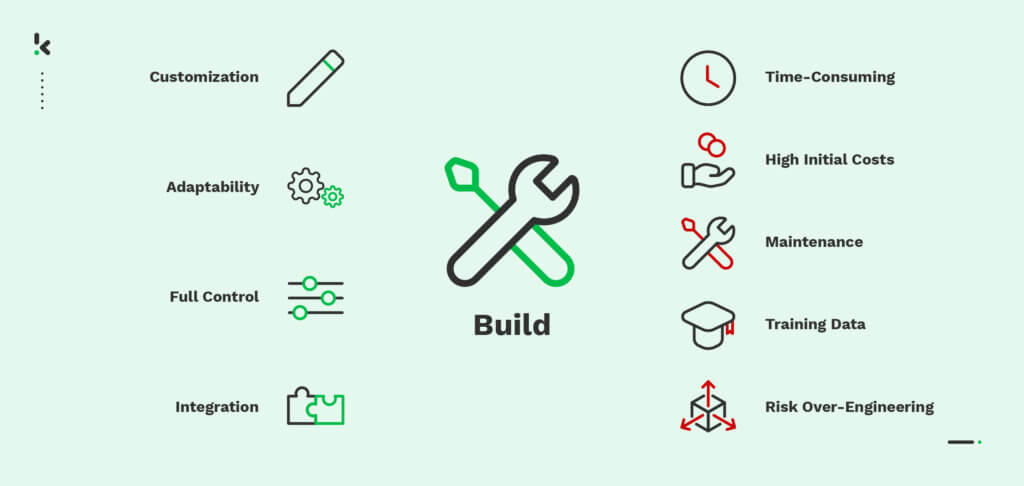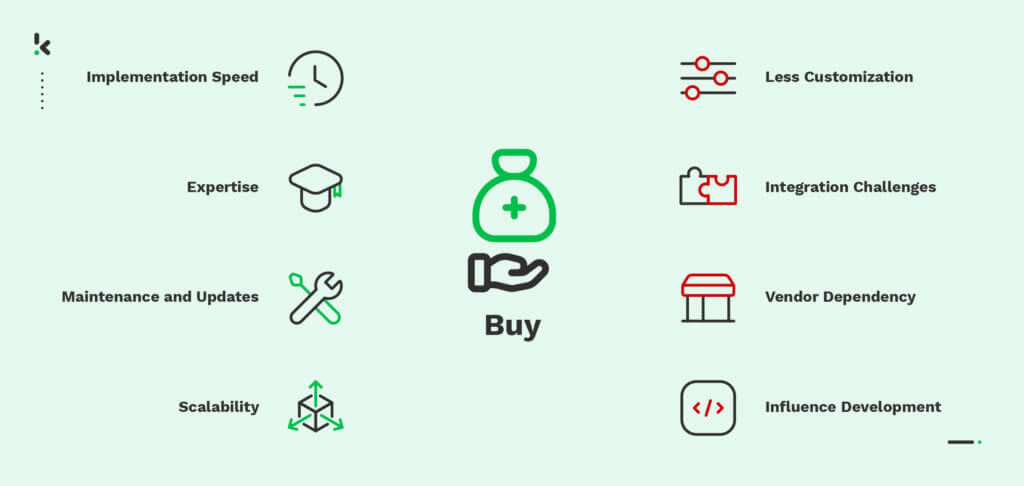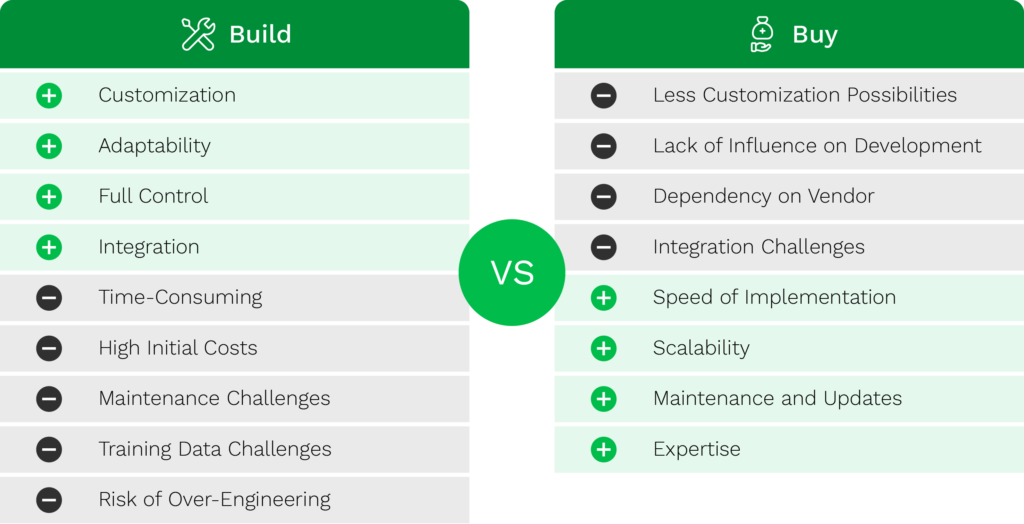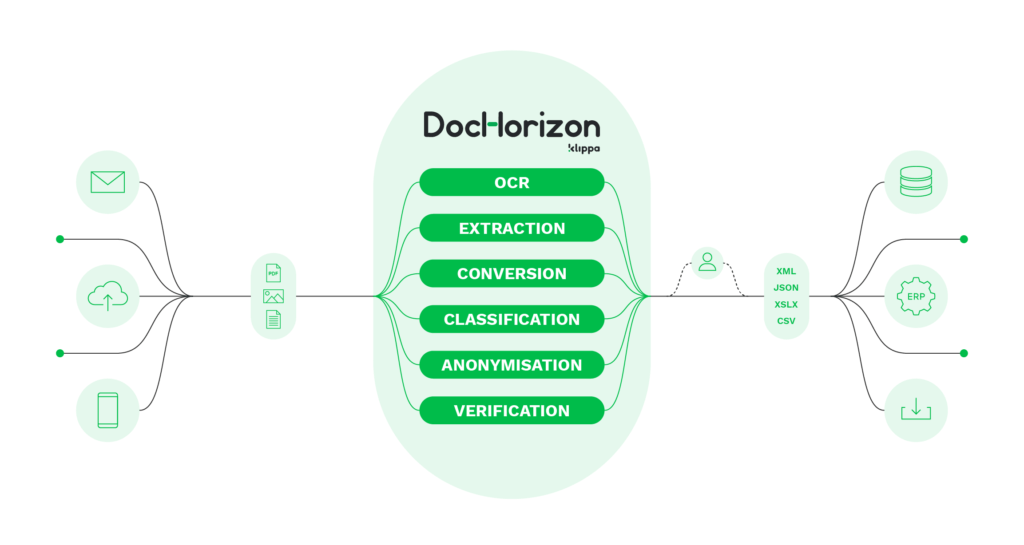

In the busy world of businesses, dealing with a mass of documents, whether in paper or digital form, can be a bit of a headache. If organizational challenges feel like a constant battle, Intelligent Document Processing (IDP) might be your solution. Picture sifting through piles of paperwork, making sense of unstructured data, and spending endless hours on manual tasks- IDP tackles these pain points and more.
By integrating advanced technologies, such as machine learning and language understanding, IDP brings order to the chaos, enabling organizations to not only cope with the data flood but harness it for informed decision-making.
Curious about how IDP can benefit your business? Intelligent Document Processing solution saves organizations from boring tasks like sorting papers, comprehends different types of documents, prevents information loss, and ensures regulatory compliance. So, IDP is not just a software; it’s your reliable assistant and the game-changer for your business.
Keep on reading this blog because we delve into the pros and cons of building or buying an Intelligent Document Processing!
Pros & Cons of Building an IDP Solution
Building an Intelligent Document Processing (IDP) system has its own set of advantages and challenges. Let’s take a look at some of them!


Pros of Building an IDP Solution:
Customization
Building your IDP system allows for complete customization. You can adapt it to precisely match your business processes, ensuring it meets your unique requirements.
This goes beyond simple feature adjustments; it means tailoring the entire solution to align precisely with your organization’s workflows, data structures, and specific document processing requirements.
Adaptability
Building your IDP solution grants unmatched adaptability. Crafted to your wishes, it offers complete customization, ensuring it aligns seamlessly with your unique needs. Unlike off-the-shelf solutions, this personalized approach evolves with your business dynamics, staying in tune with changing technology, industry standards, and regulatory requirements.
At Klippa, we prioritize customizations, working hand-in-hand with our clients to deliver solutions that surpass the standard.
Full Control
Opting for a custom-built IDP solution grants your organization full control over every aspect of the system. From the choice of technologies to the specific features included, you have the autonomy to make decisions that align with your strategic goals.
This extends to having precise control over the amount of servers and computing power, allowing you to tailor the infrastructure to meet the evolving needs of your business without compromise.
Integration
In the complex landscape of document processing, IDP elevates integration by creating a unified ecosystem for seamless collaboration with various applications, databases, and processes. The IDP solution excels in versatility, featuring seamless API connectivity to a broad range of applications.
For pre-built solutions, starting from the ground up is often unnecessary, but it’s essential to choose an option with a clear API key and comprehensive documentation for seamless integration. Whether customizing your system or leveraging a purchased IDP solution, the key lies in a smooth integration process.
Cons of Building an IDP Solution:
Time-Consuming
Building an Intelligent Document Processing (IDP) solution from scratch is a time-consuming endeavor. The development process involves careful planning, coding, and testing, which can lead to delays in implementation.
It’s crucial to consider the complexity of your project. If you require extensive functionalities and aim to support large document volumes. The associated costs and development timelines may significantly increase.
Additionally, building a custom solution demands expertise from various fields, involving collaboration among multiple developers and AI specialists, which can extend the time investment significantly.
High Initial Costs
The initial costs of developing a custom IDP solution can be significant. These costs include hiring skilled developers and acquiring cutting-edge technologies. Such upfront costs may pose a challenge for some organizations.
Maintenance Challenges
Similar to a carefully cultivated garden, a custom-built IDP demands ongoing attention and resources. Regular updates, bug fixes, and adaptation to evolving technologies are crucial for keeping the system in optimal working condition.
Training Data Challenges
Developing a custom IDP solution involves a significant need for extensive data training. To handle new documents format like invoices or receipts, obtaining thousands of copies becomes essential for effective training.
Insufficient data poses a crucial obstacle, impacting the system’s optimal performance and introducing complexity and resource demands to the process of building an IDP solution.
Risk of Over-Engineering
The allure of customization carries a potential risk – the risk of over-engineering. In the pursuit of creating a solution perfectly aligned with your organizational needs, there’s a temptation to add complex features that might not be essential.
Over-engineering can lead to unnecessary complication, potentially resulting in performance issues and increased build and maintenance costs. Striking in the right balance between customization and simplicity is crucial to avoid this risk.
Pros & Cons of Buying an IDP Solution
Shifting our focus from the pros and cons of building an IDP solution to exploring the upsides and downsides of buying an Intelligent Document Processing (IDP). Let’s consider these!


Pros of Buying an IDP Solution:
Speed of Implementation
Opting for a pre-built IDP solution offers an advantage for fast implementation. Designed to be plug-and-play, these solutions can be deployed swiftly. There’s no need for extensive development or customization. Documents with clear types, such as receipt and invoices, can often be processed immediately.
This speed is beneficial for organizations with urgent document processing needs, allowing them to quickly integrate the solution.
Expertise
When you purchase an IDP solution form a reputable vendor, you gain access to a pool of expertise. Sellers specialize in developing and maintaining these solutions, bringing a wealth of knowledge and experience to the table.
This expertise doesn’t end with the initial implementations; it goes beyond that. The ongoing support ensures that your organization benefits from the vendor’s deep understanding of document processing technologies.
Maintenance and Updates
IDP solution providers take on the responsibility for maintenance and updates. This relieves your organization of the burden of managing the technical aspects of the solution. Regular updates, bug fixes, and enhancements are handled by the vendor. They ensure that your IDP solution remains up-to-date and aligned with the latest industry standards.
Scalability
Pre-built solutions are designed with scalability in mind. Your organization grows or experiences changes in document processing requirements. Therefore, these solutions can seamlessly scale to accommodate increased columns and complexities.
Scalability guarantees that your document processing capabilities can adapt to evolving business needs.
Cons of Buying an IDP Solution:
Less Customization Possibilities
While limited customization in IDP solutions may be a drawback, it might not be a significant concern for organizations with standard document processing needs. Many IDP solutions offer flexibility to train for any document type and set up customs flows.
However, it’s essential to note that full control over optimization, including building functionality and integrations, may come at an additional cost. For businesses with standard requirements, pre-packaged solutions can often meet their needs without the necessity for highly specialized adaptations.
Integration Challenges
Integrating an IDP solution into existing IT infrastructure can be complex, with potential disruptions depending on the chosen solution. To navigate this, organizations should carefully assess compatibility and be prepared for any necessary adjustments or upgrades to ensure seamless integration.
Choosing between custom-built and pre-packaged solutions involves a trade-off. Custom-built IDP software offers flexibility for specific integrations, while pre-packaged solutions require careful consideration upfront for compatibility. The key is selecting an IDP solution that seamlessly integrates with your existing systems.
Dependency on Vendor
Opting for an IDP solution often means placing a significant reliance on the vendor. Organizations become dependent on the vendor experiencing financial issues, discontinuing the product, or failing to provide timely updates and support. Hence, it can leave the organization vulnerable.
To minimize risks related to financial stability or discontinuation, opt for well-established vendors, such as Klippa. This helps ensure ongoing support, timely updates, and reduces vulnerability for the organization.
Lack of Influence on Development
The absence of influence on development/control over the IDP system can introduce potential challenges. If the system is not robustly designed and regularly updated, it may impact the overall efficiency and functionality.
Adapting the solution to specific needs and evolving processes becomes challenging for organizations without influence. It’s crucial for businesses to assess the chosen vendor’s development practices for system alignment.
Now that you have a better understanding of the pros and cons of IDP, let’s explore whether to build or to buy such a solution!
Conclusion: Building vs Buying (Document Automation)
And here’s where the classic dilemma comes in: to buy or to build? The decision to invest in an IDP solution involves a careful consideration of the pros and cons and it depends on specific organizational needs. Below, we provide you with an overview of the advantages and disadvantages of both to help you guide this decision.


If you are still wondering whether to build or to buy an IDP, luckily we at Klippa can provide both. We offer a unique flexibility for your organization to strike a balance that aligns with your specific needs and preferences.
Intelligent Document Processing with Klippa DocHorizon
Having arrived at the final section of this blog, are you feeling the benefits of Intelligent Document Processing? If so, consider it a guarantee that we stand ready to support you every step of the way.


Leveraging Klippa DocHorizon gives you two powerful options. Firstly, there’s the option to seamlessly integrate existing IDP solutions via API and SDK, for a quick and efficient document processing experience.
If you’re considering building a customized IDP solution, DocHorizon offers an easy-to-use interface where you can effortlessly create custom workflows for all document-related processes. Alternatively, dive into the customization realm on our platform, where you can design and implement your own document processing models.
Why Klippa DocHorizon? We understand that you may have encountered challenges and concerns while exploring IDP solutions. With DocHorizon, you benefit from extensive document support, handling a variety of documents and formats. This includes the ability to submit forms in JPG, PNG, or PDF and receive output in JSON, XML, XLSX, CSV, or UBL formats. Our platform excels in processing invoices, receipts or purchase orders, and more. Additionally, our commitment to customizations ensures that you can address your specific business needs with ease.
So, whether you’re after ready-to-go convenience or the customized perfection, Klippa DocHorizon has got you covered! Schedule a demo below or contact us, and elevate your processing game!